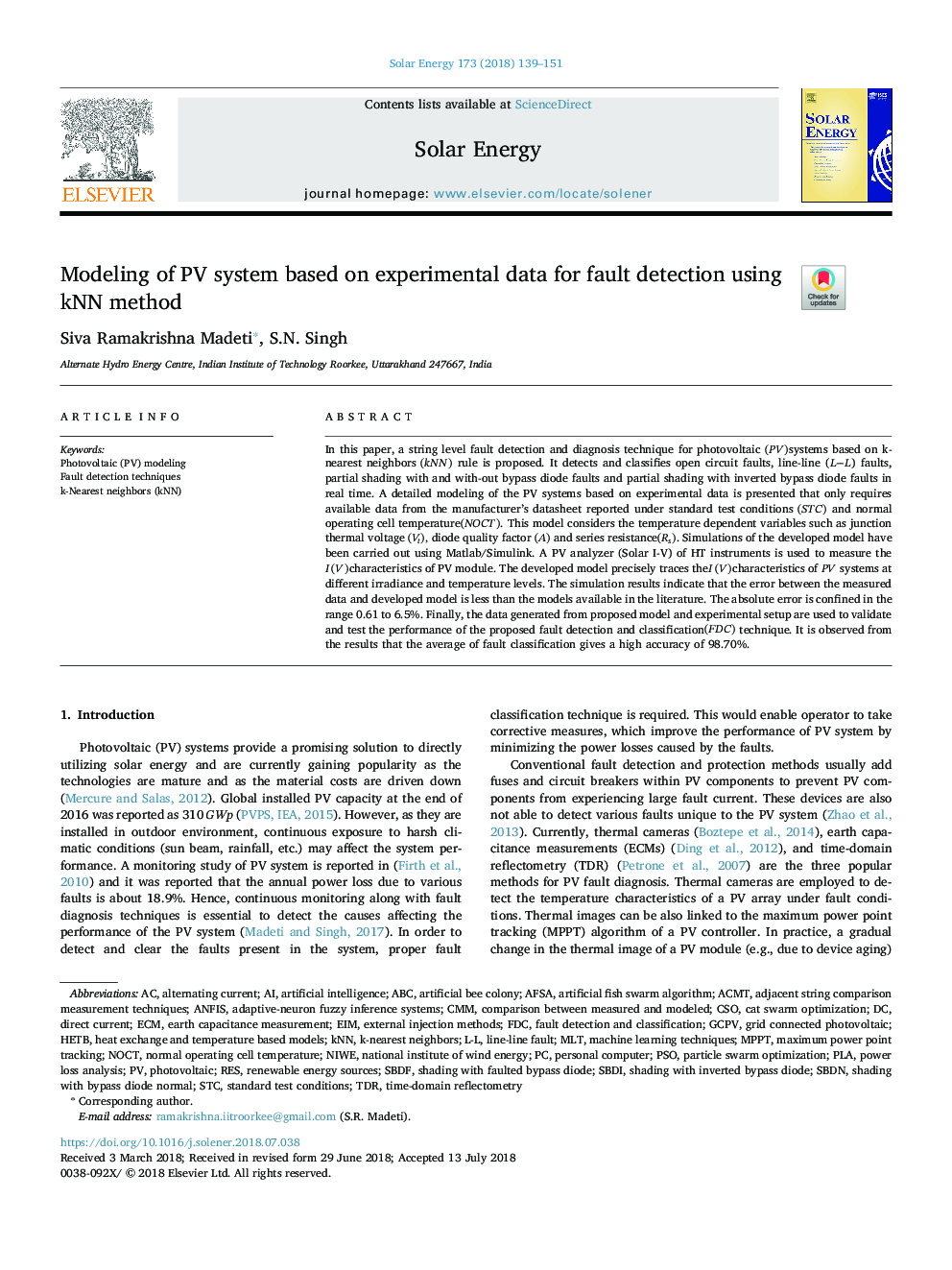| Article ID | Journal | Published Year | Pages | File Type |
|---|---|---|---|---|
| 7934906 | Solar Energy | 2018 | 13 Pages |
Abstract
In this paper, a string level fault detection and diagnosis technique for photovoltaic (PV)systems based on k-nearest neighbors (kNN) rule is proposed. It detects and classifies open circuit faults, line-line (L-L) faults, partial shading with and with-out bypass diode faults and partial shading with inverted bypass diode faults in real time. A detailed modeling of the PV systems based on experimental data is presented that only requires available data from the manufacturer's datasheet reported under standard test conditions (STC) and normal operating cell temperature(NOCT). This model considers the temperature dependent variables such as junction thermal voltage Vt, diode quality factor (A) and series resistance(Rs). Simulations of the developed model have been carried out using Matlab/Simulink. A PV analyzer (Solar I-V) of HT instruments is used to measure the I(V)characteristics of PV module. The developed model precisely traces theI(V)characteristics of PV systems at different irradiance and temperature levels. The simulation results indicate that the error between the measured data and developed model is less than the models available in the literature. The absolute error is confined in the range 0.61 to 6.5%. Finally, the data generated from proposed model and experimental setup are used to validate and test the performance of the proposed fault detection and classificationFDC technique. It is observed from the results that the average of fault classification gives a high accuracy of 98.70%.
Keywords
ABCNOCTSTCMLTCMMRESEIMCSOFDCKNNTDRANFISPLAMPPTECMk-Nearest NeighborsArtificial fish swarm algorithmTime-domain reflectometryPSOParticle swarm optimizationCat swarm optimizationFault detection and classificationMachine learning techniquesAlternating currentDirect CurrentMaximum power point trackingStandard test conditionsPhotovoltaicRenewable energy sourcesartificial intelligencepersonal computerArtificial bee colony
Related Topics
Physical Sciences and Engineering
Energy
Renewable Energy, Sustainability and the Environment
Authors
Siva Ramakrishna Madeti, S.N. Singh,
